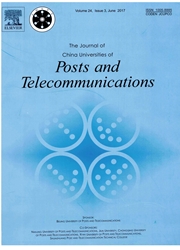

 中文摘要:
中文摘要:
The imaging speed is a bottleneck for magnetic resonance imaging( MRI) since it appears. To alleviate this difficulty,a novel graph regularized sparse coding method for highly undersampled MRI reconstruction( GSCMRI) was proposed. The graph regularized sparse coding showed the potential in maintaining the geometrical information of the data. In this study, it was incorporated with two-level Bregman iterative procedure that updated the data term in outer-level and learned dictionary in innerlevel. Moreover,the graph regularized sparse coding and simple dictionary updating stages derived by the inner minimization made the proposed algorithm converge in few iterations, meanwhile achieving superior reconstruction performance. Extensive experimental results have demonstrated GSCMRI can consistently recover both real-valued MR images and complex-valued MR data efficiently,and outperform the current state-of-the-art approaches in terms of higher PSNR and lower HFEN values.
 英文摘要:
英文摘要:
The imaging speed is a bottleneck for magnetic resonance imaging( MRI) since it appears. To alleviate this difficulty,a novel graph regularized sparse coding method for highly undersampled MRI reconstruction( GSCMRI) was proposed. The graph regularized sparse coding showed the potential in maintaining the geometrical information of the data. In this study, it was incorporated with two-level Bregman iterative procedure that updated the data term in outer-level and learned dictionary in innerlevel. Moreover,the graph regularized sparse coding and simple dictionary updating stages derived by the inner minimization made the proposed algorithm converge in few iterations, meanwhile achieving superior reconstruction performance. Extensive experimental results have demonstrated GSCMRI can consistently recover both real-valued MR images and complex-valued MR data efficiently,and outperform the current state-of-the-art approaches in terms of higher PSNR and lower HFEN values.
 同期刊论文项目
同期刊论文项目
 同项目期刊论文
同项目期刊论文
 Highly undersampled magnetic resonance image reconstruction using two-level Bregman method with dict
Highly undersampled magnetic resonance image reconstruction using two-level Bregman method with dict 期刊信息
期刊信息
